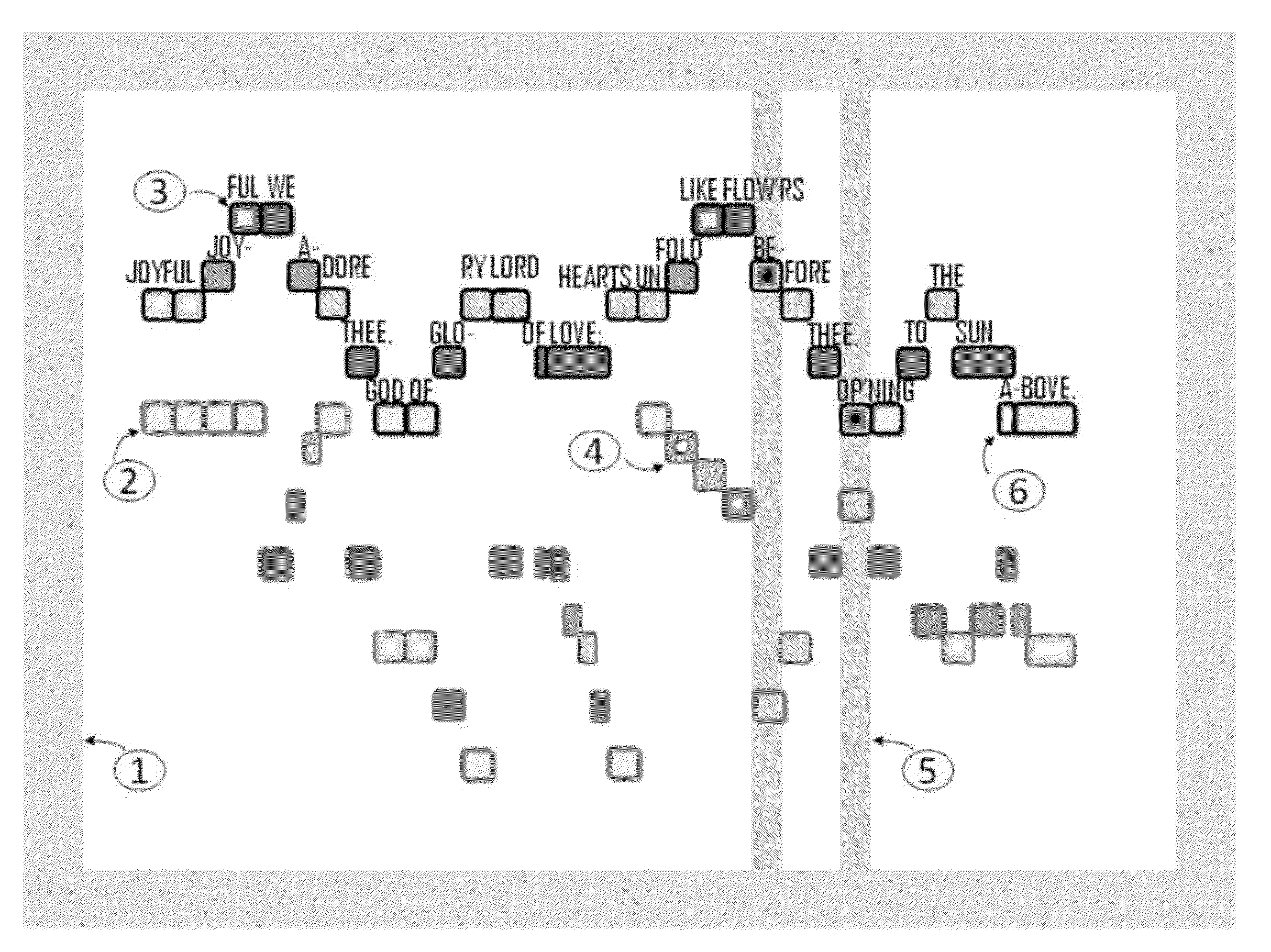Visual, tactile and motion-sensation system for representing music for an audience
a technology applied in the field of visual, tactile and motion sense systems for representing music for an audience, can solve the problems that certain elements, such as the 12-note color assignment system, may not be well suited to some traditions, and achieve the effect of broad freedom and better accommodating uneven intervals
- Summary
- Abstract
- Description
- Claims
- Application Information
AI Technical Summary
Benefits of technology
Problems solved by technology
Method used
Image
Examples
Embodiment Construction
[0018]FIGS. 1 and 2 show examples of note visual colorization, and how various members of a triad have are represented. Just about any shape, icon or image is allowed so long as it is reasonably self-contained (it can be distinguishes from elements around it.) Each note visualization should be composed up to three colors. These examples use the “circle” as the shape of quick notes. In FIG. 1 the chord is the “I” chord for the current key, or the primary note in the chord matches the key note. 1 represents a triad “first” or tonic position. The shape is enhanced to indicate that it is the root of the current chord. There is one filling color, which is assigned to the pitch of the note. This color will always be the color of the primary note of the chord.
[0019]The triad “third” or median position is shown as 2 and represents a major chord. The outer circle 2a is the color assigned to the pitch of the note, the intermediate circle 2b is the color of the primary note of the chord, and t...
PUM
 Login to View More
Login to View More Abstract
Description
Claims
Application Information
 Login to View More
Login to View More - R&D
- Intellectual Property
- Life Sciences
- Materials
- Tech Scout
- Unparalleled Data Quality
- Higher Quality Content
- 60% Fewer Hallucinations
Browse by: Latest US Patents, China's latest patents, Technical Efficacy Thesaurus, Application Domain, Technology Topic, Popular Technical Reports.
© 2025 PatSnap. All rights reserved.Legal|Privacy policy|Modern Slavery Act Transparency Statement|Sitemap|About US| Contact US: help@patsnap.com



